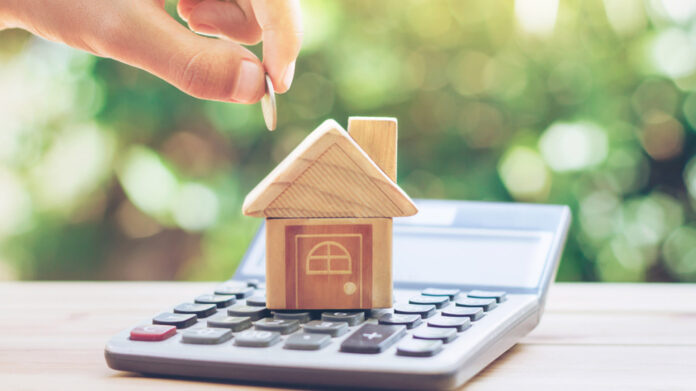The average rate for a 30-year fixed mortgage just topped 4% for the first time since 2019.
Fed Projects Seven Rate Increases in 2022
As widely anticipated, the Federal Reserve announced on March 16 that it was lifting its policy interest rate for the first time since 2018. This incremental rate hike of +0.25% is the first of seven projected rate hikes the Fed mapped out for the remainder of 2022. From near zero now, Fed policymakers expect interest rates to climb to about 1.9% by the end of this year.
Reminder it’s the New Year. You promised yourself you would become a HARRIS Coaching client. You are done wasting time and want to follow a proven path in 2022. Now, while you are here make the next natural step and join the 1000s of other agents as a HARRIS Real Estate University coaching member. No more waiting or procrastinating. Join now. Here is the quick and simple enrollment.—-> YES, Enroll Me Now In Premier Coaching. I WiLL make 2022 my best year ever!
Some of the interest rates consumers pay to borrow money had already climbed higher in the past several weeks as industry experts and investors anticipated the Fed’s March 16 “adjustments.”
The reason for the hikes? The Fed’s intention of interest rate hikes is to tame the nation’s rapid inflation rise to 7.9%. Jerome H. Powell, the chair of the Federal Reserve, said, “(Inflation) is punishing for everyone. If you’re a middle-income person, you’ve got room to absorb some inflation. If you’re at the lower end of the income spectrum, it’s very hard because you’re spending most of your money already on necessities and (prices are) going up.”
Greg McBride, chief financial analyst with Bankrate, said, “The more money consumers are pouring into the gas tank, the more money that’s being spent at the grocery store, the less money that’s available for other discretionary spending.”
Inflation Hot
As the Federal Reserve is solely responsible for maintaining price stability and inflation is running at its fastest pace in over four decades at 7.9%, the Fed’s job is to cool the current hot inflation. One key way to cool inflation’s hot temperature is to slow spending by making both spending/borrowing more expensive.
Higher interest rates essentially pour cold water on the economy by making borrowing costs more expensive. When it costs more to borrow, fewer people buy and/or can afford to buy things like houses and cars. Fewer businesses can afford to expand their operations, work force and/or buy new machinery because both the cost of doing business and the cost of borrowing are simply more expensive.
The Fed is also continuing to shrink its balance sheet of bond holdings. A new plan for this belt-tightening is expected in May. Longer-term rates may be affected and those longer-term rates could quell stock, bond and home prices.
Rate Increase Sets Off Ripple Effect for Consumers
As we discussed in an article last week about how your clients and you would be affected by interest rate hikes, interest rate hikes mean borrowing costs for everyone go up. Credit card rates will go up so expect to pay more on revolving debt. Student loan borrowers can expect to pay more when those payment plans are reactivated. Rates for borrowing on car/truck loans will go up.
Mortgage rates are more independent of the Fed’s policy actions since mortgage rates are tied to the 10-year Treasury bond yield. That being said, the 10-year Treasury bond is essentially married to inflation rates…the higher inflation, the higher mortgage rates.
We’ve already seen required down payment amounts and monthly mortgage payments rise with inflation (see last week’s article) so much so that potential homebuyers who just last month could afford a $400,000 house can no longer afford that same house due to incrementally climbing rate hikes. With interest rates hitting 4% on March 17, fewer buyers will be able to afford the same house they could afford to buy last month.
Any good news about interest rate hikes? Banks may pay more interest on savings deposits, however, getting higher savings interest depends on the type of account and the type of bank consumers use. Tip: online banks have already begun raising some of their savings interest rates; bigger, more traditional banks haven’t and likely won’t. Shop around.
According to Keith Gumbinger, vice president with HSH.com, said, “The pain to the consumer from accumulated hikes probably doesn’t start to bit until several rate increases are in place.”
An important question for you. 2022 is here…have you completed your 2022 Real Estate Business and Lead Generation Plan? If not, no worries. We have done the hard work for you. Download your 2022 REAL ESTATE TREASURE MAP! Text HARRIS to 47372. It’s that simple and takes 3 seconds. Text HARRIS to 47372 and when you do we will instantly text you back with a link to download. BONUS: For a limited time when you text HARRIS to 47372 you will also receive a Coaching Call!
4 Msgs/Month. Reply STOP to cancel, HELP for help. Msg&data rates may apply. Terms & Privacy: slkt.io/JWQt
Thanks to The New York Times and National Public Radio.























